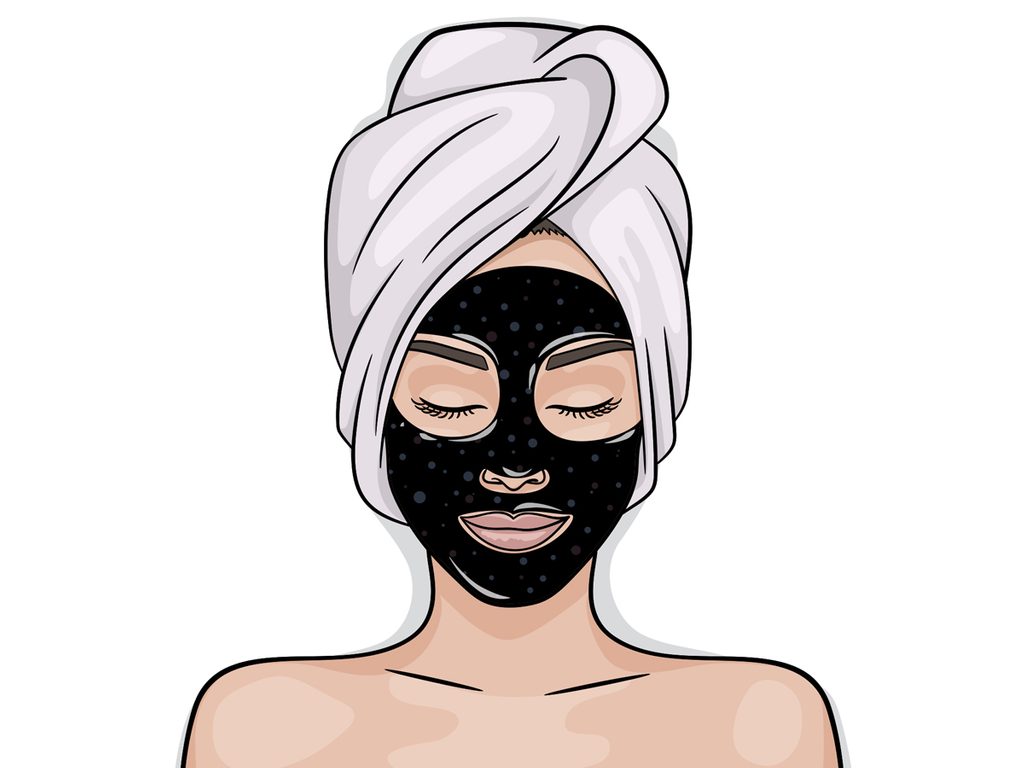I Tested One of Those Trendy Blackhead-Sucking Face Masks

Viral videos show tar-black masks being slowly peeled back to reveal hundreds of visibly expelled whiteheads and blackheads. But do they really work?
Like most beauty fans, when I catch wind of a new skincare trend, I can’t resist trying it. From coating my face with unorthodox masks and peels to brushing it with bamboo bristles, there’s really nothing I won’t try at least once. Most recently, I set my sights on those blackhead removal suction masks taking the internet by storm.
If you don’t think you’ve seen what I’m talking about, trust me, you have. The pore-purging videos are simultaneously repulsive and addictive, featuring tar-black masks that are slowly peeled back to reveal hundreds of visibly expelled whiteheads and blackheads. I made it my mission to find out whether these masks actually work.
The first step: order the mask.
After doing some research and comparing options, I chose the Pilaten Suction Black Mask, which has received more than 1,000 reviews on Amazon and tons of YouTube product reviews. It arrived a few days later. I was eager to dive right into testing, but be warned: The box and tube labels are printed only in Chinese!
The Pilaten website promises that the mask will unclog pores; absorb dirt, remove blackheads, acne, and other impurities; and treat the skin with the help of natural extracts. (Don’t miss these reasons you’re having an acne breakout.) The site also provides English instructions—jackpot.
Following the instructions, I washed my face with warm water and my go-to cleanser (La Roche-Posay Toleriane Hydrating Gentle Cleanser). After dabbing my face dry with a heated, clean towel, I applied a layer of the mask to my T-zone (forehead, nose, inner cheeks, and chin). Although the mask is as black as night and as thick as tar, I was surprised to find that it didn’t actually go on opaque. In fact, the “needed amount of gel” referenced in the instructions turned out to be three dense layers to fully cover my skin.
The website advises leaving the mask on for 15 to 20 minutes, but it was so thick that it ended up taking 35 minutes to fully dry and harden. Needless to say, do not attempt to use this if you plan on leaving your house in a hurry.
After a long wait, the mask finally dried and it was time to peel it off and check out the results. (Drum roll please!) The website says to “gently and slowly peel off the Pilaten Black Mask from the bottom up,” so I did exactly that.
But let me tell you, the process was anything but gentle.
Peeling off the suction mask was so excruciating (particularly on my cheeks) that I genuinely could not stop my eyes from tearing. It was comparable to how I imagine it might feel to peel dried superglue from your eyelids or perhaps duct tape from your inner thighs. Call me dramatic, but I felt I was being skinned alive (and it turns out I’m not the only one).
“Pain is beauty,” I kept murmuring to myself, “and this cannot all be for naught.” But, alas, when I flipped the peeled-off mask over, expecting to see thousands of expelled blackheads, I saw (wait for it) not a single one. Zero, zilch, nada—this so-called suction mask had absolutely nothing to show for all my efforts.
Convinced that I must have done something wrong, I’ve since repeated this grueling process two more times. And in problem areas where I know my pores need clearing, the mask continues to show no results. I hate to break it to you, but this supposedly purifying black suction mask did not live up to the hype in the slightest.
My friends, save your money, save your time, and save your skin a world of pain and avoid this trend. My advice is to stick to the tried and true. I had better results with Bioré Deep Cleansing Pore Strips, an acne product that really works.
Next, try one of these DIY face masks you can make and apply tonight.




